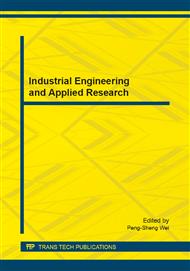p.18
p.24
p.28
p.33
p.39
p.44
p.48
p.55
p.60
Prediction of the Development of Non-Equilibrium Turbulent Boundary Layers Based on Modified Log-Wake Law
Abstract:
The properties of non-equilibrium turbulent boundary layers are substantially more complicated than that of equilibrium ones, and current understanding and predictive capabilities of the former are less well developed than of the latter. This paper proposed a nonlinear dynamical system approach to predict streamwise development of non-equilibrium turbulent boundary layers by means of realizing the closure of the momentum integral equation with aid of the modified log-wake law and the entrainment equation. The example calculation showed the results were in reasonable agreement with the experiment data, and demonstrated the proposed method could predict the streamwise evolution of the layers accurately and simply. Moreover, the method would be conveniently extended to the flows over rough surfaces.
Info:
Periodical:
Pages:
39-43
Citation:
Online since:
August 2014
Authors:
Price:
Сopyright:
© 2014 Trans Tech Publications Ltd. All Rights Reserved
Share:
Citation:


